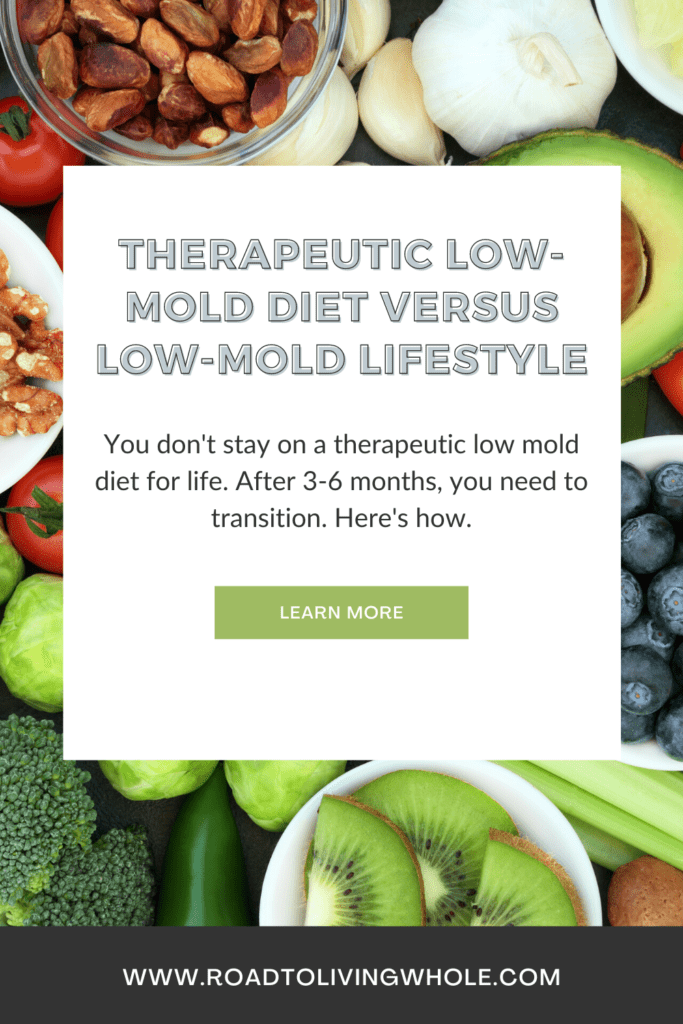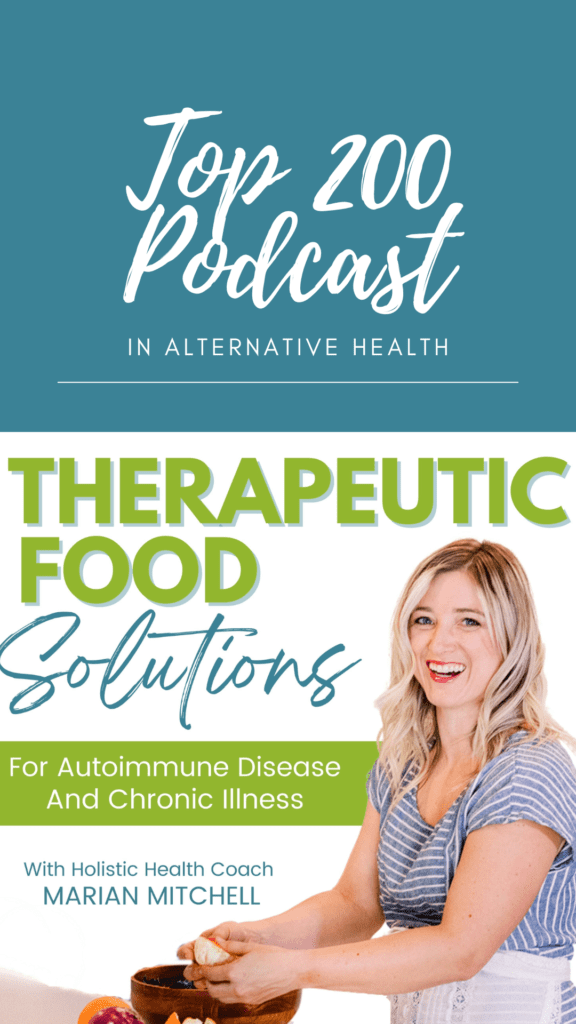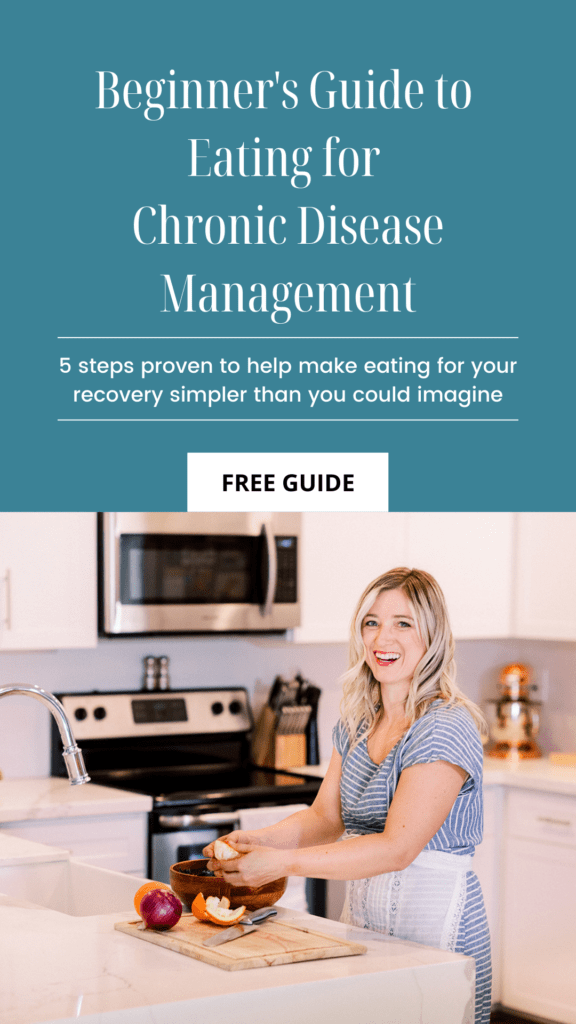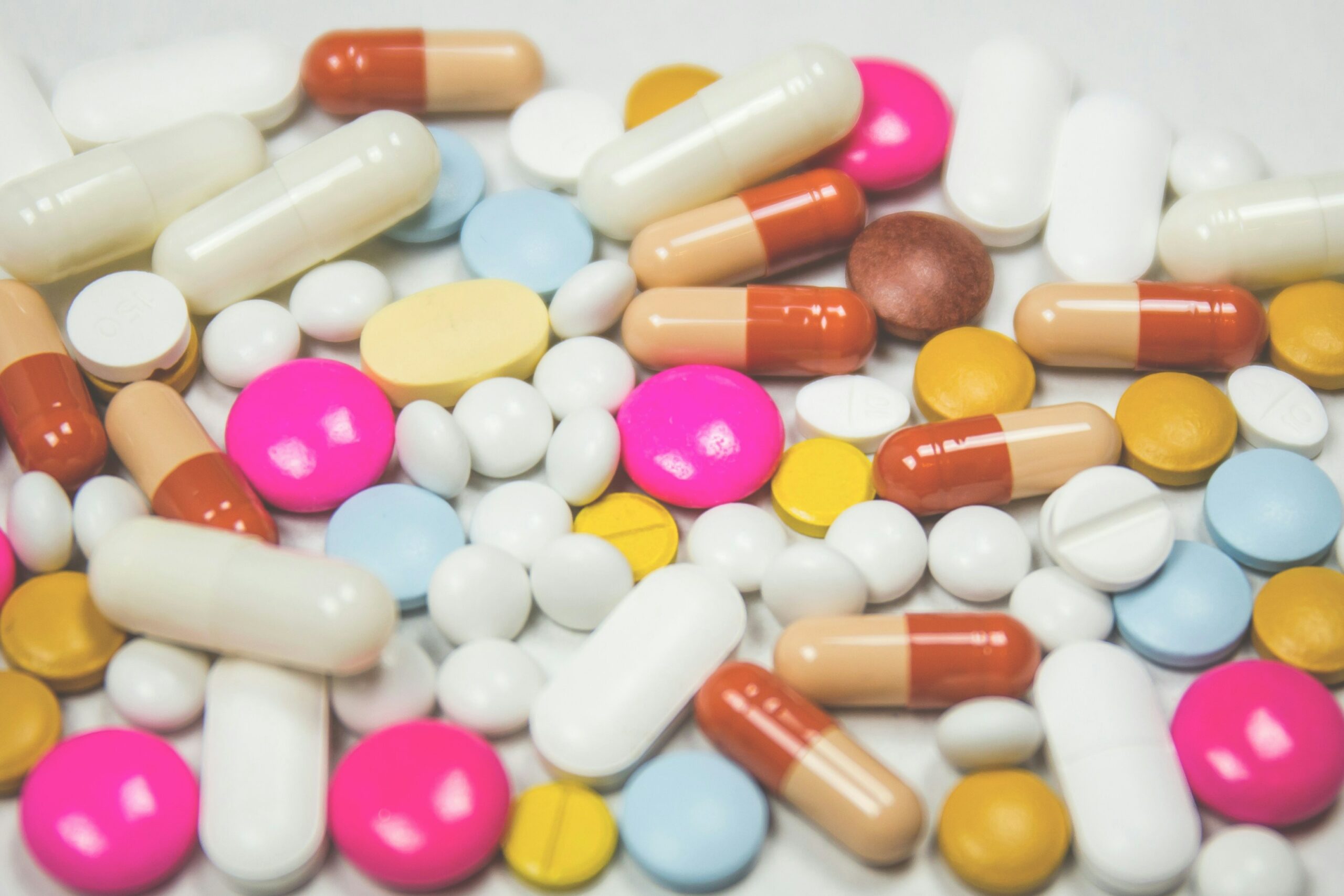Mold toxicity is a struggle more people deal with than is recognized. The symptoms are all over the place and most doctors are not well versed in mold toxicity, the best test for it, or treatment once it is discovered. You are often left to fend for yourself, go through a one-size-fits-all course with a supplement regiment that is typically too harsh, and are told to follow a low-mold diet.
The question that isn’t answered is, “How long do I have to stick to this?” “If I’m sensitive to mold, do I have to eat this restrictive for life?” Most often those who struggle with mold toxicity are the “canaries in the coal mine.” We get sick first and the longest. I say we because I fall into this category. Today I want to walk you through the difference between the low mold diet you follow while recovering from mold toxicity and the diet we “canaries” follow post-treatment to prevent it from returning.
Therapeutic Low-Mold Diet
A therapeutic low-mold diet is a restrictive diet that limits high mold foods, sugar and sugary fruits, leftovers, prechopped produce, fermented foods, and preserved foods. You are to follow this diet typically for 3-6 months in conjunction with binders that bind to mycotoxins to help remove them from the body. It is recommended to follow the therapeutic diet for a short time for several reasons.
It is designed to be a jumpstart to dramatically lower your intake of mold and boost the nutrients your detox pathways need to remove the mycotoxins. It is not necessary to stay restrictive for months on end.
That being said, it can take 18 months or more for mold levels to go down to a normal/healthy range. Slow and steady wins this race so you can still function and live your life while healing. After the initial therapeutic diet (3-6 months), you can move to a more low-mold lifestyle while continuing to treat the mold via binders and supplements until you test within the normal range via the urine test.
Low-Mold Lifestyle
A low-mold lifestyle focuses on minimizing the highest mold foods and eating fresh, nutrient-dense foods. It has much more flexibility. After completing the therapeutic low-mold diet, you can add back in
- all fresh fruits
- fermented foods
- all vegetables
- prechopped produce
- meal prepping
- eating refrigerated leftovers
Basically you can now resume a normal, healthy diet with a few modifications. You will, however, need to continue to minimize or completely avoid the highest mold foods.
These high mold hitters you will want to continue to minimize and/or avoid are:
- peanuts and peanut butter
- cashews
- walnuts
- dried fruits
- high mold coffee (continue consuming low mold coffee)
- grains (you want to limit to one serving per day or less)
- sugar substitutes
- limited added sugar (up to 4 tsp per day for women, 6 tsp for men)
- jarred baby food (the highest mold processed food on the market!)
Other Low-Mold Lifestyle Considerations
Making sure your home is mold free
There is a lot you can do to make sure you reduce the opportunity for mold to grow in your home. Things you can do include:
- Making sure you have exhaust fans in your bathrooms.
- Dehumidifier in your home if needed.
- Running humidifiers only as needed and don’t run so high you get moisture on the walls in the mornings.
- Getting your AC ducts cleaned and sprayed with a mold inhibitor annually
- Changing out your air filters at the recommended intervals
Avoiding having indoor plants
Mold is an integral part of decomposing soil and releasing nutrients for plants. Having a lot of indoor plants will mean mold spores in your air. For many people, this wouldn’t be an issue. If you are trying to detoxify from mold and/or are a mold sensitive individual, indoor plants are not a good idea.
Air filter for the room you are in the most
Having a high quality air filter in your bedroom is a really good idea to help keep the air free from mold and other indoor pollutants. You can find a comparison of different air filter here.
Keep other toxins low too
Your body is working hard to remove mycotoxins and heal from the damage they have caused. By reducing your overall toxic burden, your body will do it’s job faster. A few places to start are
- switching your lotions and body wash to organic ones
- change your cookware from teflon to a non-toxic cookware like stainless steel, cast iron, or glass
- switch out your antiperspirant to an aluminum free deodorant
- stop using fragance around the house like plug-ins, candles, and febreeze
- switching to a free and clear laundry soap and stop using fabric sheets
By making these simple swaps, your body will have a significantly lower toxic load and thus, be able to handle the mycotoxins much more efficiently.
Recovering from mold toxicity is a long, slow journey but it shouldn’t be miserable. If you’d ever like more support, please schedule a coaching call.










3 thoughts on “Therapeutic Low-Mold Diet versus Low-Mold Lifestyle for Mold Recovery”
Wow! Interesting, I just learnt something new.
Thank you for posting the educational and practical information!
So down to earth. 🌍
I plan to select the highest priority item(s) and then getting started.
Again, thank you 🙏🏼
Sandra
I’m so glad you found it helpful!